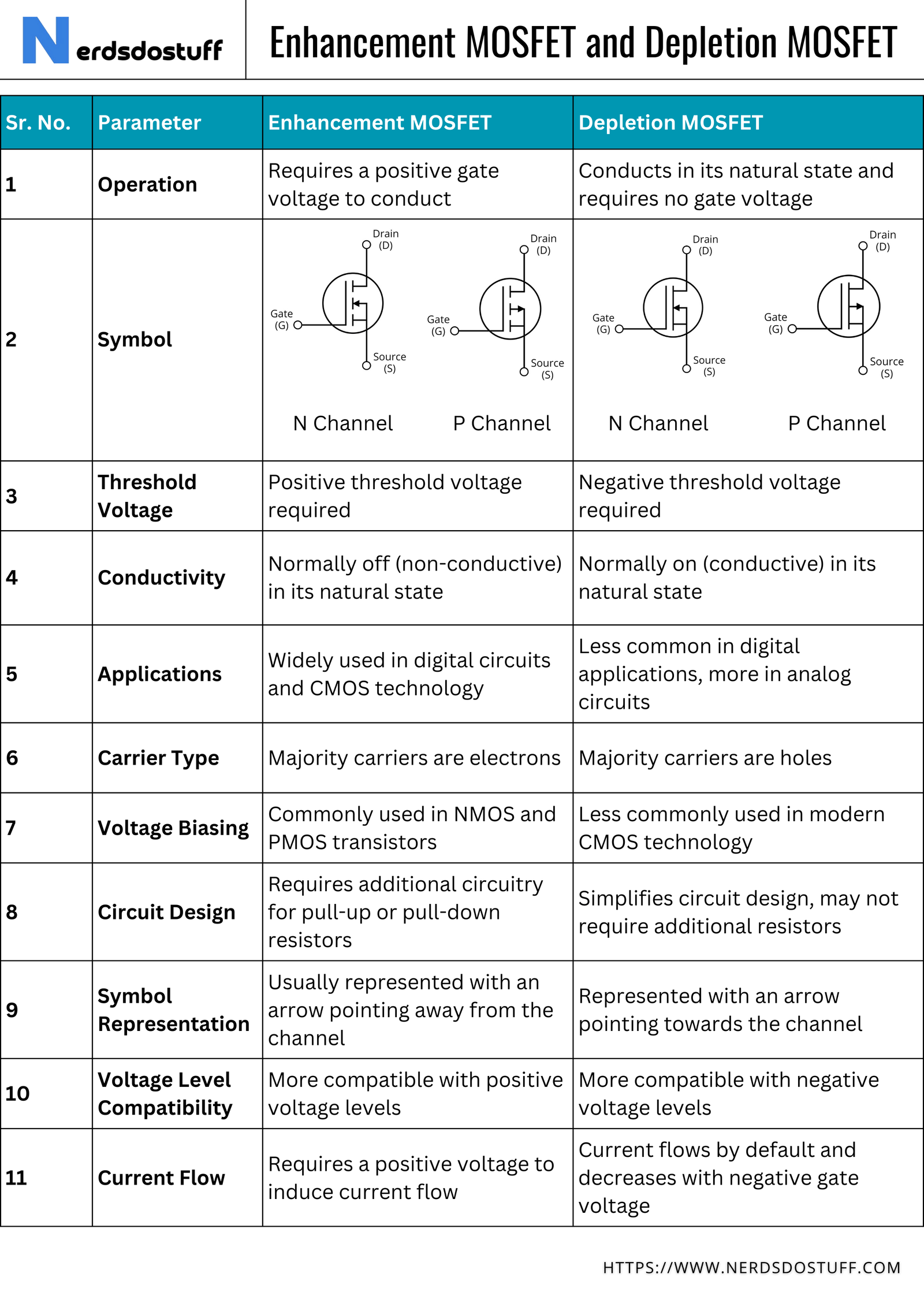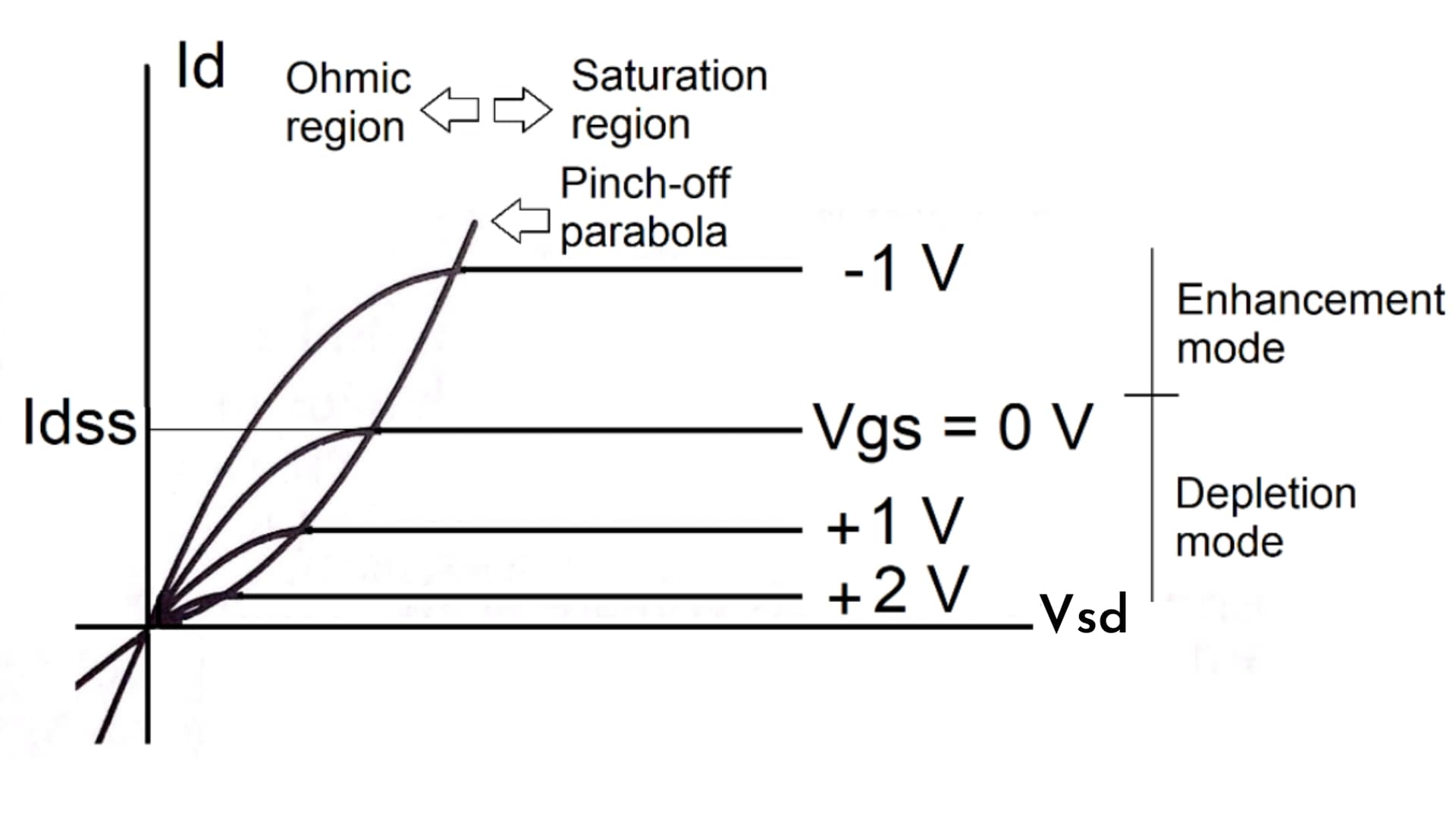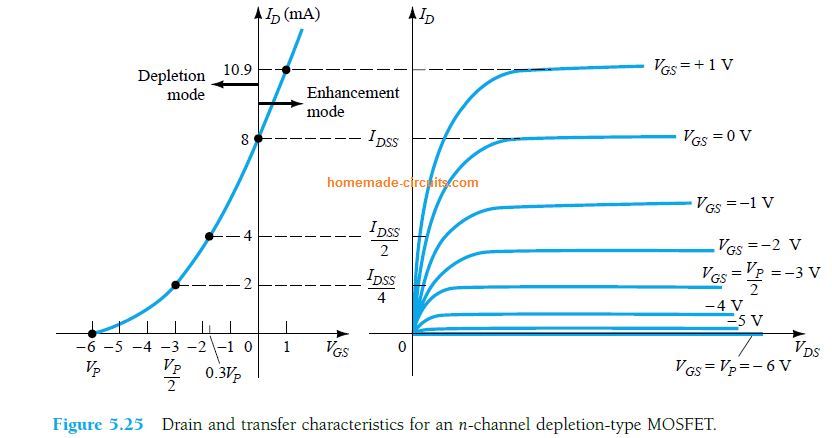Alright, let’s talk about these MOSFET things. I heard some folks call ’em “enhancement” and “depletion” mode. Sounds fancy, but it ain’t that hard to understand, not really. It’s like this…
Enhancement Mode MOSFETs – The “Turn It On” Type
These enhancement thingamajigs, well, they’re like a light switch that’s always off. You gotta give it a little juice, a little push, before anything happens. That “juice” is the voltage you put on the gate, that little leg sticking out. You give it enough, and *bam* – the electricity starts flowing between the other two legs, the drain and the source. Think of it like a water pipe, the gate is the valve. Gotta open the valve for the water to flow. No voltage, no flow. Simple as that.
And get this, for the NMOS kind, the ones that use them little electrons to do the work, you gotta give it a positive voltage. Positive, like adding something. Like addin’ water to the well so it flows again. It’s like you’re enhancing it, get it? Making it work better.
- Needs voltage to turn on.
- For NMOS, you need a positive voltage.
- No voltage, no current flow. Like a closed pipe.
Depletion Mode MOSFETs – The “Already On” Type
Now, these depletion fellas, they’re a bit different. They’re like a faucet that’s already dripping a little bit. Electricity’s already flowing between the drain and the source, even without you doing anything to the gate. It’s already on, see?

But here’s the kicker, you can actually use the gate to *stop* the flow, or at least slow it down. It’s like tightening the faucet to slow the drip. For the NMOS depletion kind, you gotta give it a *negative* voltage to shut it off. Negative, like taking something away. You’re depleting it, see? Taking away the electricity flow. It’s weird, I tell ya, backwards from the other one.
And these fellas, the depletion mode ones, they ain’t used as much. Seems like they got their own special jobs, where you need the thing to be on all the time, unless you tell it to stop. Kinda like a night light, always on unless you unplug it.
- Current flows even without gate voltage.
- For NMOS, you use a negative voltage to turn it off.
- Used in special situations where you need it always on.
What’s the Big Difference?
So, the big to-do between these two? It’s all about how they act when you ain’t messing with the gate. Enhancement is off until you turn it on. Depletion is on until you turn it off or slow it down. And it all boils down to that voltage you put on the gate and how it’s made, somethin’ about bombardin’ the channel with somethin’. Sounds complicated, and I reckon it is. But that’s the gist of it.
Where You See ‘Em

Now, where do you find these things? Well, I hear they’re in just about everything these days. Your phone, your computer, your car, probably even that fancy new toaster oven you got. They’re like little switches, controlling the flow of electricity, making things work the way they’re supposed to.
Don’t Get Too Hung Up on the Details
Look, I ain’t no engineer, just an old woman tryin’ to make sense of things. If you wanna get all technical, go read a book or somethin’. But if you just wanna understand the basics, well, that’s how I see it. Enhancement, you gotta turn it on. Depletion, it’s already on, you gotta turn it off or slow it down. Simple as that, ain’t it?
And this whole NMOS and PMOS thing? Don’t even get me started. It just flips everything around. Positive voltage becomes negative, and negative becomes positive. It’s enough to make your head spin! But the basic idea is the same. It’s all about that gate and how it controls the flow.
Anyway, that’s my two cents on these MOSFET things. Hope it helped a little, even if it just made you chuckle at this old woman tryin’ to sound smart. At the end of the day, they’re just little switches doin’ their job, and that’s all that really matters, right?

And that’s all folks.
Tags: [MOSFET, Enhancement Mode, Depletion Mode, NMOS, PMOS, Transistor, Electronics, Gate Voltage, Drain, Source, Current Flow]

